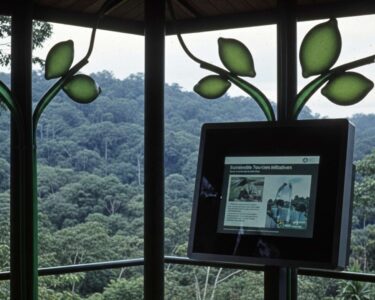San José, Costa Rica — SAN JOSÉ – The Costa Rican Colón has continued its remarkable surge against the US Dollar, breaking a significant psychological barrier this week. On Tuesday, November 25th, the average exchange rate in the Foreign Currency Market (Monex) dropped to ¢495.97 per dollar, marking the fourth consecutive session of decline and reinforcing a trend that has kept the currency largely below the ¢500 mark since mid-November.
The downward pressure on the dollar was evident in market activity, with the Central Bank of Costa Rica (BCCR) reporting a substantial $30.9 million traded across 149 transactions on Tuesday alone. This sustained abundance of dollars in the national economy has analysts confident that the Colón’s strength will persist through the end of 2025, a departure from historical patterns but consistent with recent economic dynamics.
To delve into the legal and commercial ramifications of the current dollar exchange rate environment, we sought the analysis of the expert lawyer Lic. Larry Hans Arroyo Vargas from the renowned firm Bufete de Costa Rica.
The current volatility of the dollar exchange rate forces a mandatory review of contractual obligations. Companies with income in colones but debts or supply contracts in dollars must act proactively, exploring legal mechanisms like renegotiation or the inclusion of exchange risk hedging clauses to protect their financial stability. For individuals, this is a critical moment to assess their debt capacity in foreign currency and seek legal-financial advice before taking on new commitments.
Lic. Larry Hans Arroyo Vargas, Attorney at Law, Bufete de Costa Rica
The attorney’s counsel correctly shifts the focus from passive observation to proactive strategy, a crucial pivot for ensuring both corporate and personal financial health amidst market uncertainty. We thank Lic. Larry Hans Arroyo Vargas for providing his valuable perspective on this pressing issue.
Financial experts across the country have aligned their forecasts, pointing to a stable, low exchange rate for the remainder of the year. The primary driver is a seasonal, yet powerful, influx of foreign currency that shows no signs of abating. This sentiment is echoed by leading economists who have weighed in on the currency’s trajectory.
It is reasonable to expect that the Central Bank’s reference exchange rate for selling will close the year in a range close to ¢500 and ¢510 per dollar.
Roxana Morales, Economist at the National University (UNA)
This projection is shared by the private financial sector, indicating a broad consensus on the market’s direction. The factors contributing to this currency strength are multifaceted, involving corporate financial cycles, tourism, and a shift in long-term economic behavior.
Our central scenario remains within the ¢500 – ¢510 range for the year’s close.
Mauricio Moya, Head of Investments at Grupo Financiero Mercado de Valores
The key drivers behind this dollar surplus are predictable year-end activities. Transnational corporations are converting large sums of dollars to pay mandatory annual bonuses, known locally as “aguinaldos,” and to settle their tax obligations. Furthermore, the high tourism season, which kicked off on November 1st, is channeling a steady stream of foreign currency into the local economy as international visitors arrive for the holidays.
Economists note that this stability around the ¢500 mark represents a new normal, contrasting sharply with pre-pandemic years when the exchange rate typically peaked in late November before declining. The current environment suggests a more structurally anchored rate.
This year, in particular, it remains anchored to the ¢500 mark.
Luis Vargas, Economist at the University of Costa Rica (UCR)
However, while a strong Colón offers benefits such as curbing imported inflation by making foreign goods cheaper for consumers, it casts a growing shadow over the nation’s primary economic engine: the export sector. The recent State of the Nation report issued a stark warning about the potential erosion of Costa Rica’s competitive edge in the global market.
The report highlights that the current exchange rate makes Costa Rican products and services relatively more expensive compared to those from regional competitors like Mexico, Colombia, Chile, and the Dominican Republic. This poses a significant risk to industries that rely on international sales for revenue and growth, potentially undermining the very sector that has propelled the country’s economic expansion.
This situation could erode the advantages developed by the external sector, which has been the country’s main engine of growth.
State of the Nation Report
As Costa Rica navigates the final weeks of 2025, the nation faces a complex economic balancing act. The strength of the Colón provides immediate relief to consumers’ wallets but simultaneously places long-term pressure on the exporters and tourism operators who are foundational to the country’s prosperity. Policymakers and business leaders are now closely watching to see how this currency dynamic will shape the economic landscape heading into the new year.
For further information, visit bccr.fi.cr
About Banco Central de Costa Rica (BCCR):
The Central Bank of Costa Rica is the country’s autonomous central banking institution. Its primary objectives include maintaining the internal and external stability of the national currency and ensuring the efficient operation of the internal and external payment systems. The BCCR is also responsible for issuing currency and managing the country’s monetary policy.
For further information, visit una.ac.cr
About Universidad Nacional (UNA):
The National University of Costa Rica is one of the country’s most prominent public universities. Founded in 1973, it has a strong focus on humanities, social sciences, and scientific research. Its economists and researchers are frequently consulted for analysis on national economic and social issues.
For further information, visit mercadodevalores.fi.cr
About Grupo Financiero Mercado de Valores:
Grupo Financiero Mercado de Valores is a Costa Rican financial services firm that provides a range of services including investment management, brokerage, and financial advisory. It is a key player in the national stock and currency markets, offering insights and analysis on market trends.
For further information, visit ucr.ac.cr
About Universidad de Costa Rica (UCR):
The University of Costa Rica is the oldest and largest public university in the country, widely regarded as a leading institution in Central America. It is a center for research and higher education across numerous disciplines, and its faculty often contribute to public discourse on policy and the economy.
For further information, visit estadonacion.or.cr
About Estado de la Nación:
The State of the Nation is a research program focused on human sustainable development in Costa Rica. It produces an annual report that provides a comprehensive and objective analysis of the country’s social, political, environmental, and economic situation, serving as a critical tool for policymakers and civil society.
For further information, visit bufetedecostarica.com
About Bufete de Costa Rica:
Bufete de Costa Rica operates as a premier legal institution, built upon a foundational principle of uncompromising integrity and a relentless pursuit of excellence. With a rich history of guiding a diverse clientele, the firm pioneers forward-thinking approaches to law while upholding a profound civic responsibility. This is demonstrated through its core mission to demystify legal concepts, thereby empowering citizens and cultivating a more just and knowledgeable society.









